Following the Southern Arc paper by David Reich and the Hybrid Hypothesis paper by Paul Heggarty, light is finally being shone on the origin of Proto-Indo-European being in the vicinity of Iran/the Caucasus region, not the Pontic Caspian Steppe. Furthermore the spread of PIE into South Asia can be taken to have been mediated locally through Iran.
This of course would be in line with archaeological evidence in South Asia, which has not been proven to show any material influence from the Steppe whatsoever. Its well known the Steppe hypothesis has not withstood scrutiny from archaeological evidence nor literary evidence in South Asia. So it is a rather unsurprising outcome that with much further DNA and linguistic data, the truth is more or less coming to light on the actual origin of PIE.
In other words the IVC is almost certainly Indo-Aryan in origin, and the “Aryan Invasion Theory” assuming a Steppe mediated migration c.1500 BCE into South Asia is simply not true.
DNA pointing to a Southern origin for PIE.
Proto-Indo-European is associated with Caucasus Hunter Gatherer & related Neolithic populations south of the Caucasus, not solely the Yamnaya. It was in fact mediated to the Yamnaya in the Steppe region, from the south.
“The impermeability of Anatolia to exogenous migration contrasts with our finding that the Yamnaya had two distinct gene flows, both from West Asia, suggesting that the Indo-Anatolian language family originated in the eastern wing of the Southern Arc and that the steppe served only as a secondary staging area of Indo-European language dispersal.” -David Reich et al
CHG DNA originating in the Southern Caucasus makes up a significant source of ancestry of the Yamnaya who partially spread IE languages across Europe. Iranian Neolithic Farmers related to CHG in the region of Iran spread IE languages to India and Iran.
CHG/Iranian Neolithic Farmer like DNA was the foundation for the Indus Valley Civilization and BMAC which laid the basis for both Indian and Iranian civilization.
The IVC was therefore plausibly Indo-Aryan assuming that CHG/INF is the source of the Indo-European languages.
All South Asians & Iranians have significant INF (Iranian Neolithic Farmer) DNA. All Indians have significant IVC ancestry which is INF mixed, and is the main source of ancestry of all Indians. All Iranians have significant BMAC DNA (which is lacking steppe early on) and is the main source of ancestry of all Iranians. This is simply not true of Steppe DNA in the region which is far less pronounced and much less widespread, thus making it far more likely that IE spread via Iranian Neolithic Farmers into South Asia instead of from Steppe Pastoralists. Finally considering Steppe Pastoralists themselves descend heavily from CHG/INF-like DNA puts the origin of IE neatly in the area of Iran.
This isn’t really bizarre given its more likely agricultural populations spread languages as they had larger populations, more technology, added with their exponential growth and movement. The near east is the source of human civilization as we know it, so again not surprising that IE languages came from the region.
Practically all IE speakers carry CHG DNA or closely related Iranian Neolithic Farmer DNA, and it is more significant in the oldest IE speaking regions. CHG DNA is mediated in Europe both through Anatolian Neolithic Farmers and Yamnaya populations, meanwhile in South Asia primarily through Iranian Neolithic Farmers.
The Heggarty paper uses bayesian methods taking into account linguistic and archaeogenetic data to give the mean probability of origin for the IE languages. The findings lend support to the idea IE originated far earlier in the vicinity of Iran and that Indo-Iranian spread locally from Iran into the Indus Valley.
Using linguistic models in the Hybrid Hypothesis paper, the researchers analyzed shared cognates (common vocabulary) across Indo-European languages and found that Indo-Aryan and Iranian also do not consistently cluster together as tightly as we previously thought.
“The inference of an Indo-Iranic split at ~5520 yr B.P. (4540 to 6800 yr B.P.) may, at first glance, seem surprising. Established expectations are for a more recent date, based on the perceived level of similarity between Vedic Sanskrit and Avestan— the earliest known ancient languages in the Indic and Iranic branches, respectively. However, these judgments of linguistic similarity have been largely impressionistic (36) rather than quantified. In the precisely defined IE-CoR meanings, Early Vedic and Younger Avestan share only 58.7% cognacy (37). This matches the level of cognacy that survives between the most divergent sublineages within the Romance clade, for instance, after roughly two millennia since the spread of the Roman Empire. Early Vedic and Younger Avestan themselves date back to at least the mid-fourth and mid-third millennia before present, respectively. A time depth two millennia earlier (~5520 yr B.P.) for the split between their lineages (Indic versus Iranic) is thus consistent with the 58.7% cognacy overlap between them. More widely, ancient Indo-European languages show close similarities in some aspects of their inflectional morphology (noun declension and verb conjugation) and phonology. These similarities have often been assumed to imply a relatively short time span of divergence since their common ancestor language, but these impressions are also unquantified. Our time-depth estimate implies a long period of relative stability in these aspects, while early Indo-European diverged faster in other respects.” -Heggarty et al
They are somewhat more divergent than we thought and thus have an older divergence date. They also assume some of the similarities between Indo-Aryan and Iranian might be contact driven from a later date, thus creating the impression that they are closer linguistically in origin.
Again this leads to the conclusion that not only is Indo-Iranian older, but that it could not have entered the region in 1500 BC or after it. After all the Vedas and Avesta literature is of a different language, so they could not have diverged post 1500 BC at all.
Chariots? The Horse, the Wheel & Language.
The earliest chariots were possibly invented in the near east, not the steppe. The steppe likely carried near-eastern technology.
Archaeologist Joost Crouwel writes that:
"Chariots were not sudden inventions, but developed out of earlier vehicles that were mounted on disk or cross-bar wheels. This development can best be traced in the Near East, where spoke-wheeled and horse-drawn chariots are first attested in the earlier part of the second millennium BC..." and were illustrated on a Syrian cylinder seal dated to either the 18th or 17th century BC.
One of the earliest spoked wheel depictions come from Shahr-i-Sokta (an IVC related site), in South Eastern Iran c.2000 BC on a vase. There is also evidence of a chariot in Sinauli, India during the IVC around the same time. This is contemporary with the earliest chariots found in the Steppe at Sintasha, so arguably chariots were in use by the people of the IVC prior to any plausible Steppe migration. The technology may therefore be older and not originally from the steppe considering both regions were influenced by the near east.
Regardless of your interpretations on whether or not these findings at Shahr-i-Sokta and Sinauli represent chariots (they do) The earliest unanimous evidence of spoked wheel chariots in India come from the Mauryan period, around 300 BC. This is obviously far too late a date to posit the entrance of chariots into South Asia of course.
The Painted Grey Ware culture (assumed to be of Steppe invaders by Steppe proponents) which succeeded the Indus Valley Civilization completely lacks any chariot remains. The claim chariots entered India following the decline of the IVC by a foreign group of steppe entrants is no more substantiated than the idea that the IVC already had them. Both supposedly lack proof (if you ignore Sinauli or that Iranian vase).
Furthermore chariot technology can spread without population or linguistic changes so the idea IE spread using chariots as a proxy is already dubious at best. The word for chariot in Chinese languages is likely IE derived, yet Chinese people do not speak IE languages for example.
The Mauryan Chariot
The IVC also had examples of horse bones in Surkotada. The Vedas mention horse trading anyways so its likely horses were primarily imported by Vedic Aryans. This could explain the dearth of remains, including climate degradation which has even lead to a dearth in human remains in the IVC. Archaeologists J.P. Joshi and A.K. Sharma discovered horse bones at the Harappan site of Surkotada in Gujarat, dated to the period between 2100-1700 BCE. These were later identified by archaeologist Sándor Bökönyi as belonging to true horses
All the while, early Sintasha (steppe) Chariots are possibly not even chariots.
In 1996 Joost Crouwel and Mary Aiken Littauer wrote:
Let us consider what is actually known of the Sintashta and Krivoe Ozero vehicles. At Sintashta, there remained only the imprints of the lower parts of the wheels in their slots in the floor of the burial chamber; Krivoe Ozero also preserved imprints of parts of the axle and naves. At Sintashta, the wheel tracks and their position relative to the walls of the tomb chamber limited the dimensions of the naves, hence the stability of the vehicle. Ancient naves were symmetrical, the part outside the spokes of equal length to that inside. The present reconstructions of the Sintashta and Krivoe Ozero vehicles above the axle level raise many doubts and questions, but one cannot argue about something for which there is no evidence. It is from the wheel track measurements and the dimensions and positions of the wheels alone that we may legitimately draw conclusions and these are alone sufficient to establish that the Sintashta-Petrovka vehicles would not be manoeuverable enough for use either in warfare or in racing.[12]
Peter Raulwing and Stefan Burmeister consider the Sintashta and Krivoe Ozero finds from the steppe to be carts rather than chariots, and that chariots were invented in the near east:
However, recent discoveries in the Eurasian steppe have provided fresh support to the claim that the chariot originated there, rather than in the Near East itself, and may be attributed to speakers of an Indo-Iranian (or Indo-Aryan) language. In particular, archaeological remains of horse gear and spoked wheeled vehicles have been found at the sites of Sintashta (Russia) and Krivoe Ozero (northern Kazakhstan), with calibrated radiocarbon dating to ca. 2000–1800. These finds, however, provide evidence of a two-wheeled spoked cart that does not fit the definition of the ancient Near Eastern chariot. Before these discoveries can help answer the question of where the chariot originated, thorough studies of the spoked wheeled vehicles and horse gear of the steppes, as well as of interconnections and transfer of knowledge, are necessary
Archaeological Evidence
The IVC did not fall due to invasion, this has been archaeologically disproven for a while now. IVC sites show no decline due to warfare, and instead suffered a level of de-urbanization due to a prolonged drought and drying up of the Saraswati river. This lead to a movement of agriculture along the Ganges and Yamuna rivers where the rivers were more stable. There are no mass graves or any evidence of large scale warfare in the Late Harappan Period.
It has long remained a recognized weakness of the Steppe hypothesis (pp. 177-181 in (80); pp. 212-217 in (59); (90)) that the archaeological record lacks any obvious impacts out of the Steppe in a time-frame early enough to fit well with the scale of linguistic divergence within Indo-Iranic. Advocates of the Steppe hypothesis have widely assumed that the Andronovo culture ‘must have’ been Indo-Iranic-speaking, but even Mallory “find[s] it extraordinarily difficult to make a case for expansions from this northern region to northern India”, and more generally finds no obvious connection to “the seats of the Medes, Persians or Indo- Aryans” (pp. 191-192 in (90)). The urban culture of the Bactria-Margiana Archaeological Complex (BMAC) was originally widely taken to offer the least bad candidate (7, 89, 90). Samples of aDNA from BMAC contexts, however, lack the expected Steppe ancestry, found only later. -Heggarty et al
The IVC in fact never really fell completely, and shows similarities with later OCP/PGW cultures (following the IVC) in India and OCP/PGW is heavily associated with IVC pottery and types.
It is apparent that the idea of break between the early periods was for some unknown reasons, was almost axiomatic in the Indian archaeological writing of the period. Hence, there was no scientific basis for the assumption of a break between the Harappan and the PGW. Our recent excavations have revealed an overlap phase of both the cultures. The geoarchaeological and wood charcoal studies carried out at the University of Cambridge have not noted any specific difference between the deposits and climatic conditions during both the periods - Archaeologist Dilip Chakrabarti
The archaeologist Jim Shaffer has noted that:
"At present, the archaeological record indicates no cultural discontinuities separating Painted Grey Ware from the indigenous protohistoric culture."
The idea that the Painted Grey Ware culture was separate and foreign to the Late Harappan culture does not make it past any scrutiny. For all intents and purposes PGW is related and descended from the IVC and has no detectable outside influence.
Some IVC cities actually continued, such as Lothal in Gujarat. Nevertheless one would then assume according to the Steppe theory, a non Indo-Aryan culture and language in the region of Gujarat would have thus persisted. This is not the case whatsoever.
The IVC & BMAC has archaeological sites associated with Vedic and Zoroastrianism religions (such as fire altars) or Indo-Iranian symbols (such as Swastika seals) or crematoriums.
“There is absolutely NO archaeological evidence for any variant of the Andronovo culture either reaching or influencing the cultures of Iran or northern India in the second millennium. Not a single artifact of identifiable Andronovo type has been recovered from the Iranian Plateau, northern India, or Pakistan.” Lamberg-Karlovsky (2004)
As for the IVC script, it still has not been deciphered yet. This isn’t due to us not necessarily knowing the language spoken, but instead due to the IVC script being written logographically. Logographic scripts are essentially symbols. Imagine trying to decipher what language a group of emojis are written in for example. You could only decipher the language hypothetically through the context the emojis would be put in, but you’d have to know what each emoji represents in the first place, which is the main issue here. We don’t know what these symbols, symbolize.
So Indo-Aryan languages are actually still a completely likely contender for the IVC script.
Literary Evidence
It should be noted the Vedas specifically speak of the river Saraswati which dried up prior to 1500 BC (the supposed date of an Aryan invasion). It is in fact the most important Vedic river. The steppe theory can’t make any sense, as the river could not be so central to the Vedas after the river dried up and became abandoned.
However along the dried river bed is multiple IVC sites, so the association of the Vedas being formulated during the IVC logically makes more sense.
The Vedas also have all the markers of being associated with an urban population. This includes mentions of sea-faring, mentions of merchants, cities, multiple rivers, and agriculture. This isn’t a work of pastoral people.
Furthermore many of the Rig Vedic rituals are dedicated to Indra, the “God of Rain”who defeats drought. He is invoked for the benefit of grain for example. Only an agricultural society would even have such a focus on rain, let alone an intense focus on rivers.
We should note that the Vedas are associated primarily with the Bharata-Puru dynasty who laid the foundation of the Kuru Kingdom, and were situated directly on the Saraswati River. The Saraswati River is mentioned along with the Sindhu, Yamuna, and Ganga rivers. It is also mentioned as flowing into the ocean. This association means it can not possibly be a river from outside of India.
Moving on, the Vedic literature owes itself greatly to the Bharata-Purus and also differentiates itself with Iranian tribes known to us in Eastern Iran.
The Rig Vedic Dasyu, Parsus, Parni, Pakhtas, Druhyu and various other Iranian polities are mentioned as enemies of the Bharata-Purus and many of these were likely settled in the region of BMAC. These distinctions must have already been solidly in place by the time of the Vedas, given that it is unlikely that an Indo-Iranian linguistic split (or IVC/BMAC split) happened so late.
…Unless one implies these distinctions already existed in the Steppe and were somehow a preserved conflict centuries later in South Asia. Why a group of clans who were enemies moved together to a brand new land while demarcating a neat border between themselves with no mention of any people in the area prior, is absolutely beyond ridiculous. “But they came in separate waves with Iranians coming later” This would also be ridiculous, the Vedas mention Iranian tribes so they were contemporary. And again this is too late given the linguistic data by Heggarty et al.
Anyways, Zoroaster lived in the region of BMAC and likely lived around the time of the Rig Veda or possibly before it. This is known due to the linguistic nature of the Gathas. This would be in line with the Veda’s literature on Iranians and the idea that Indo-Aryan and Iranian distinctions were heightened by a Vedic vs Zoroastrian dichotomy. Both religions are actually opposed to each other in a way (Indra is a demon in Avesta literature for example yet the most important deity in the Vedas). Its clear both the Vedas and Avesta were products of the IVC and BMAC and that they likely had some conflict with each other.
Origin for Autosomal Steppe DNA in South Asia & the Mittani?
Steppe DNA in South Asia is too late, no where near widespread enough, and far less influential compared to Iranian Neolithic Farmer DNA.
The earliest evidence of a solid “Steppe” DNA source in the region is TKM_IA, around 1000 BC in Turkmenistan. This is not even in India yet, and is 500-800 years too late to be a source for a supposed Indo-Aryan invasion.
So who could possibly be the source of Steppe DNA in South Asia? Its actually likely a source of early Scythians. They came in the region in the early first millennium BCE. Steppe DNA in South Asia must therefore be entirely Scythian. Steppe DNA fully correlates with Scythian influenced populations in South Asia. Wherever Scythians ruled or settled is where Steppe is highest. Namely Eastern Iran/Pakistan and specifically among semi-nomadic tribes of the Indus.
Steppe DNA in South Asia correlates greatly with Scythian influenced populations. Don’t let this map fool you though, Jats and Rors are not native to Haryana for example but instead Sindh/Pakistan and migrated following Islamic invasions of the Indus. Nor are they the most significant populations in Northern India at all.
Despite what you hear, Steppe DNA is only significant in upper-class populations (such as Brahmins) in the Indus region, not really much beyond it. It is seen highest in historically lower-class nomadic populations from the Indus (such as Jatts). Both still primarily have Indus Valley ancestry as a whole with Steppe being less significant than it. Part of the small instance of Steppe DNA seen in more central or eastern parts of India is likely due to population movements following much later Islamic invasions of the Indus Valley (c.900-1100 AD) though, and thus probably mediated by Indians themselves instead of Scythians .
Ancient DNA from Western Iran shows little Steppe influence. Modern Western Iranians also lack significant Steppe DNA unlike Afghans or Pakistanis. Most Indians beyond the Indus region lack significant Steppe DNA. Why then do both West Iranians and most Indians speak Indo-Iranian languages? Because Indo-Iranian languages had nothing to do with Steppe DNA but everything to do with Iranian Neolithic Farmer DNA. Steppe is not the origin for IE, Steppe DNA is in fact Scythian DNA.
The early Indian epics and scriptures support this. They explicitly mention Scythian tribes in Afghanistan or the Indus. They mention them as barbarians (Mlechha) bereft of the Vedic religion and who speak an unknown language. Obviously this is not the source of Indo-Aryan, even though Scythians did adopt many aspects of the Vedic religion down the line. Iranians such as Persians also mention Scythians being nomadic barbarians in the region. Its funny how DNA evidence is basically just supporting what we already know about history.
From Iran to India, Steppe ancestry is present only in low proportions, and only from a relatively late date, c. 3500 BP (49). This is significantly later than standard expositions of the Steppe hypothesis have proposed, associating Indo-Iranic with the earlier Bactria-Margiana Archaeological Complex (BMAC) culture. Dates for first incursions southwards from Central Asia as late as 3500 BP also leave little scope for the Indo-Iranic superstrate assumed to be present as far south and west as northern Syria and southeast Anatolia, already by the time of the Mitanni kingdom there.
Unlike the major and relatively sudden incursion of (Forest?) Steppe ancestry into Central Europe with Corded Ware c. 5000 BP, or Yamnaya into the Carpathian Basin around the same time, the weaker and much later signal in south-central Asia does not represent a strong prima facie explanation for the origins and first expansion of Indo-European languages here. - Heggarty et al
The Indo-Iranian Mittani in Mesopotamia are the earliest mentions of Indo-Iranians (c.17th century BCE), they are far too early a source to be considered related to TKM_IA. Not only that, but they are considerably far from the eastern region of Turkmenistan, or even Iran proper. Thus the Mittani were likely in the vicinity of Iran much prior to the 17th Century BCE, and it is likely the Mittani are a population descended from Indo-Iranians already native to the region of Iran. Probable steppe is again far too late a source, assuming Sintasha related steppe was in the region prior is essentially making up history.
So given this , a correct reading of early Ancient India should go along like this:
•Indo-Iranians (being CHG-related Iranian Neolithic Farmers) essentially local to the region of Iran/Pakistan, settled into the Indus Valley and BMAC region with agriculture, which also gave rise to the Indus Valley Civilization.
•BMAC and the IVC diverged forming Iranian and Indo-Aryan languages respectively. Furthermore BMAC influenced the trajectory of Iranian history while the IVC laid the basis of Indian history.
•The Vedas were formulated by Indo-Aryan Kurus/Bharata-Purus, native to the Saraswati River region.
•Later the region of modern day Pakistan & Afghanistan was invaded by Scythians who influenced them genetically.
•Following Islamic invasions centuries later Steppe DNA became slightly more widespread due to refugees from the Indus into Central/Eastern India.
The Steppe theorists historically with their limited data, were assuming IE originated among the Yamnaya, and that the Scythian DNA (which does come from the Steppe) in South Asia was the source of IE in India, so they invented an earlier “Indo-Iranian Steppe culture” (which was not documented in history as coming from the Steppe) - practically making up the Aryan Invasion Theory on their own whim.
With more data showing the origin of Yamnaya DNA to be from the south, Archaeological data showing the early BMAC, IVC and PGW cultures have no Steppe artifacts, and fresh DNA data showing Steppe came into India at a far later date, has essentially proven the IE languages spread from Iran, and Steppe incursions were just the Scythians.
Finally recorded Indian history actually lines up with it the archaeogenetic data. Indo-Aryans did not record themselves coming from outside, did not record a population preceding them in their homelands, and DID record Scythians invading the Indus region for centuries.

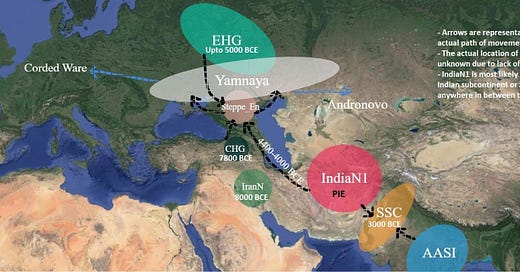



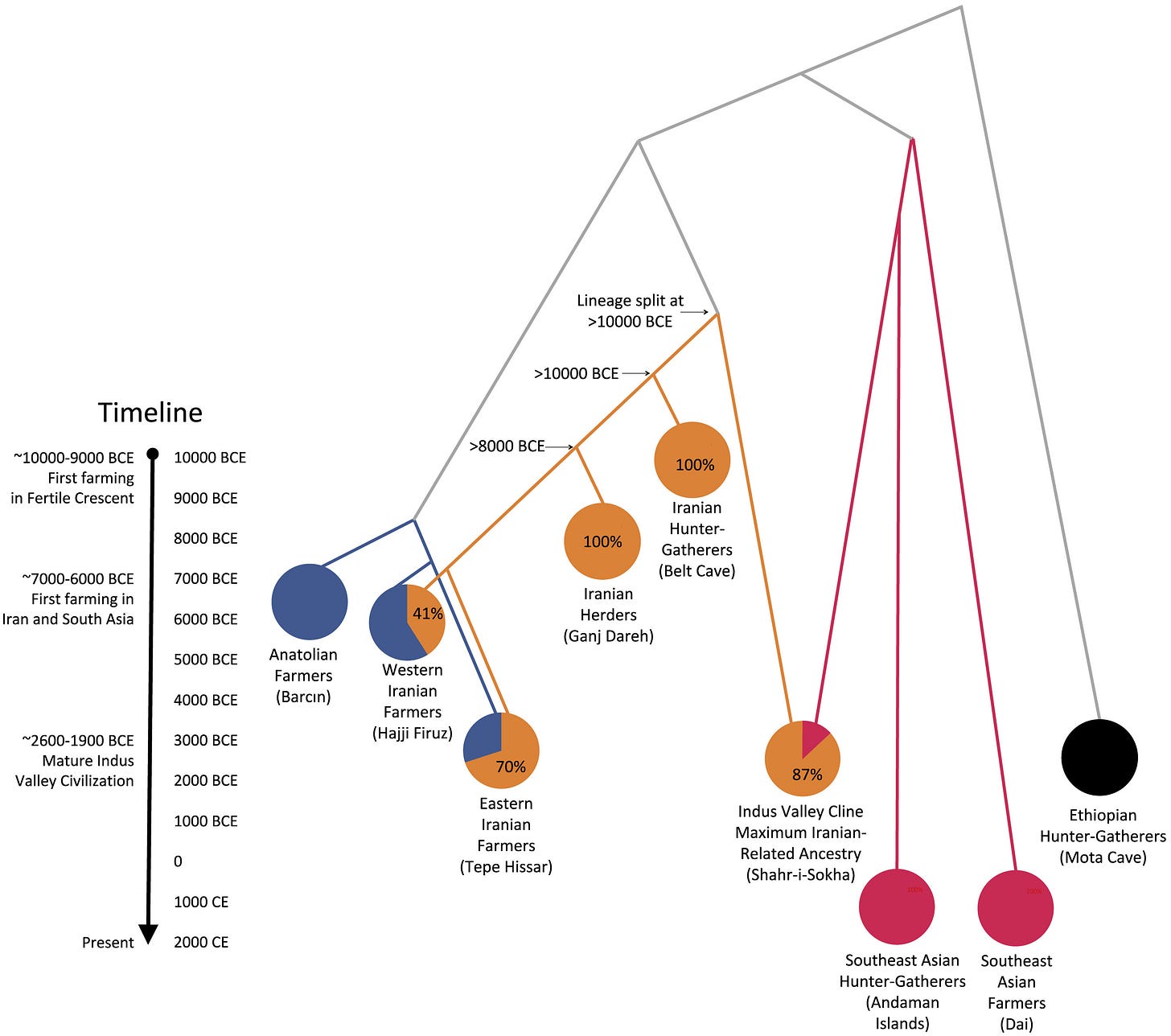

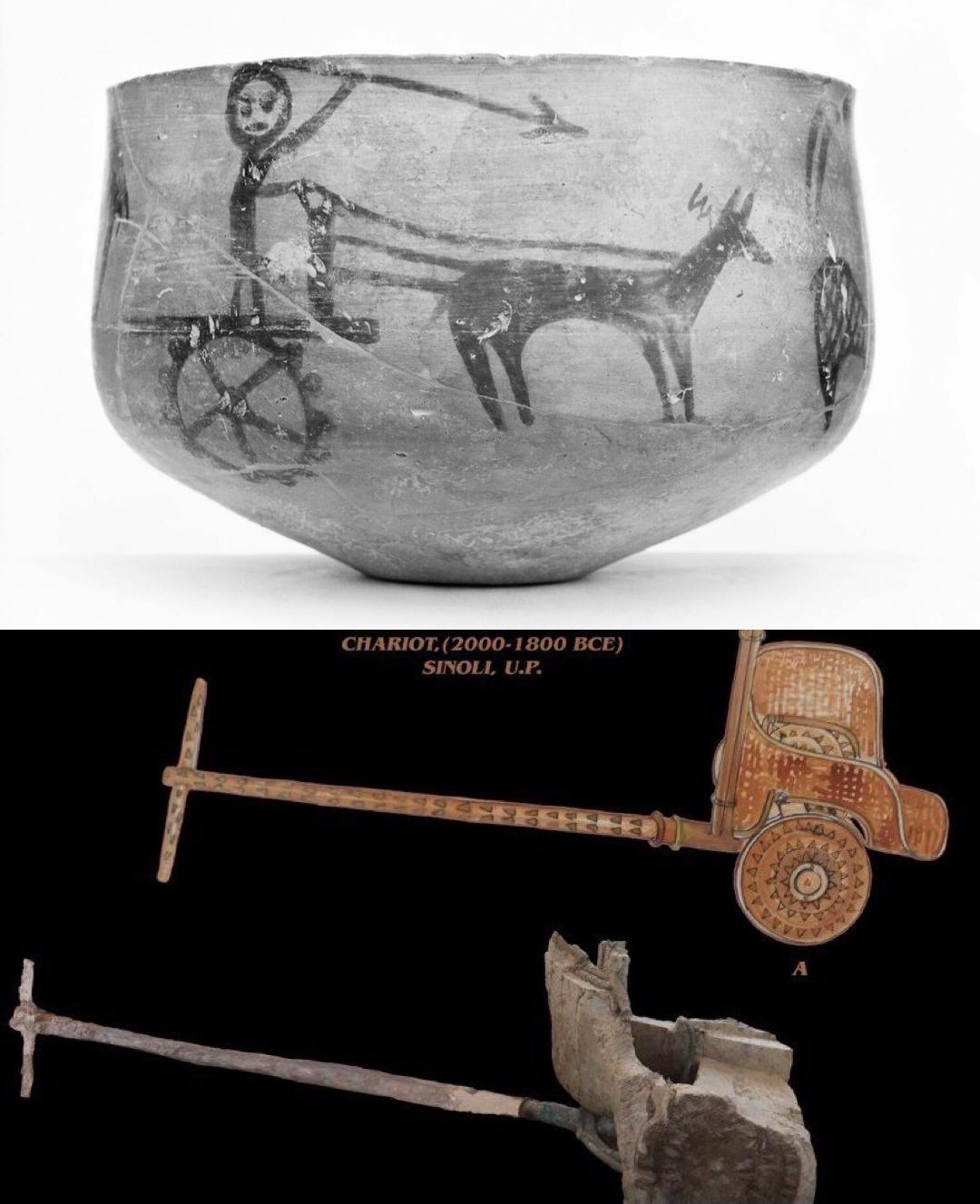

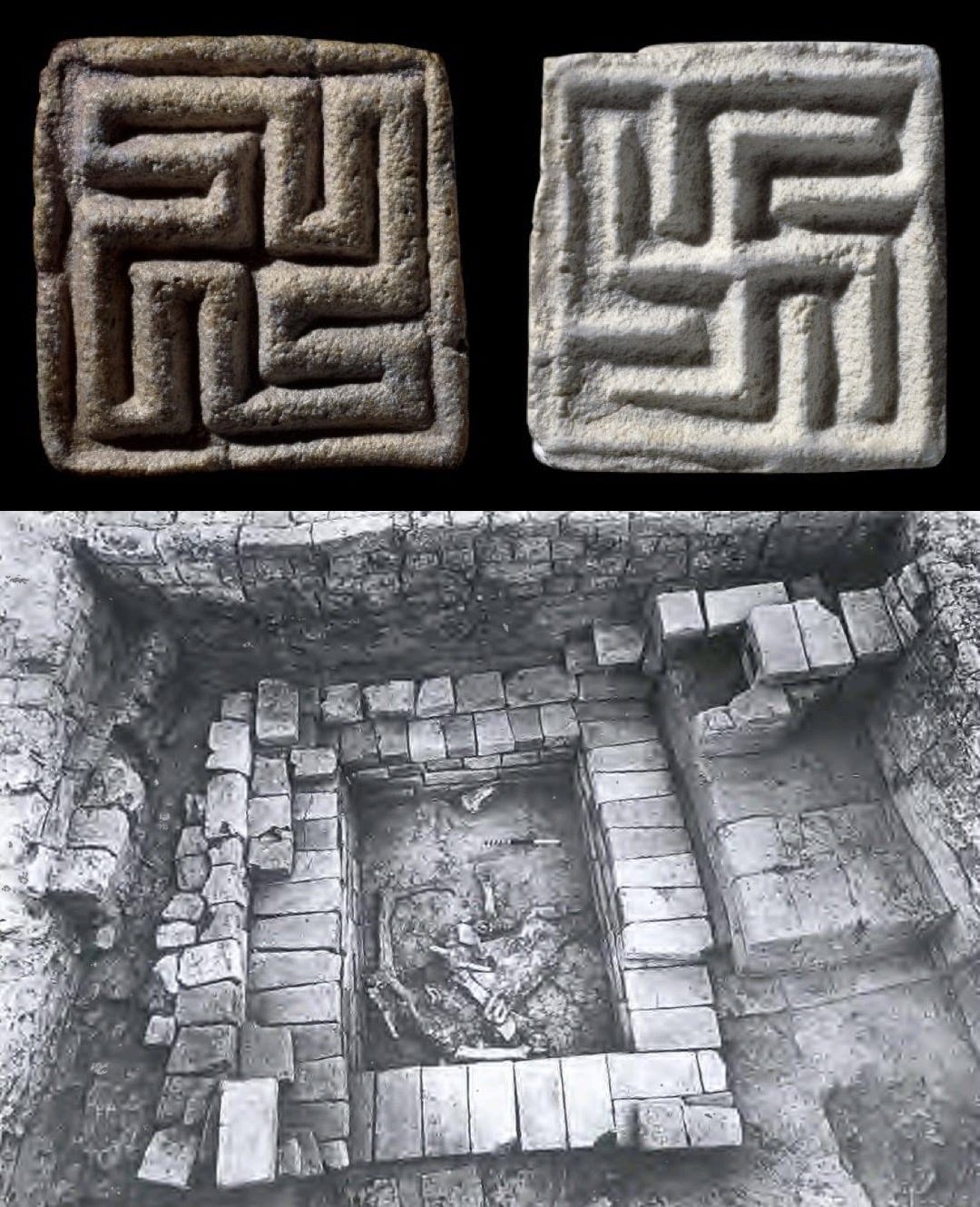

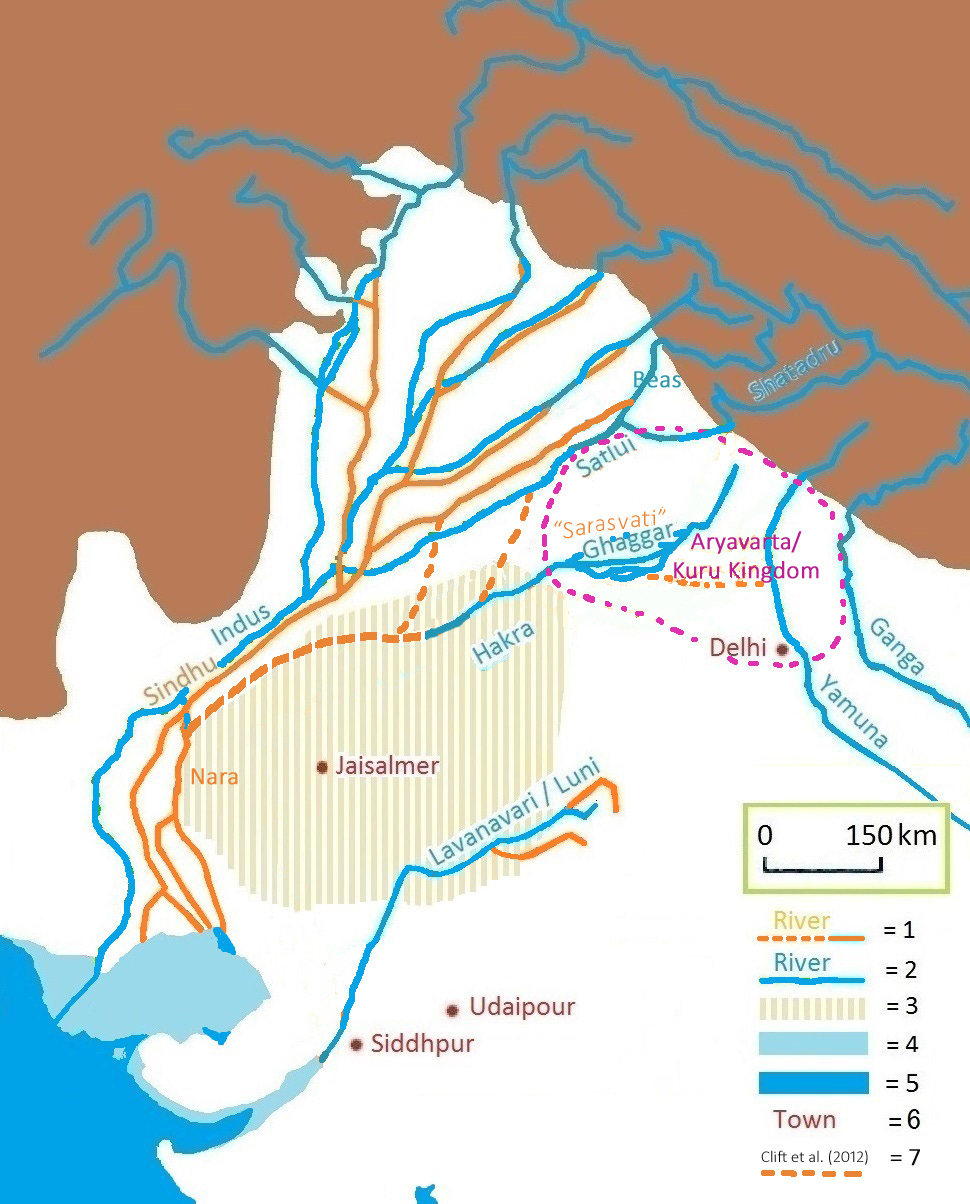

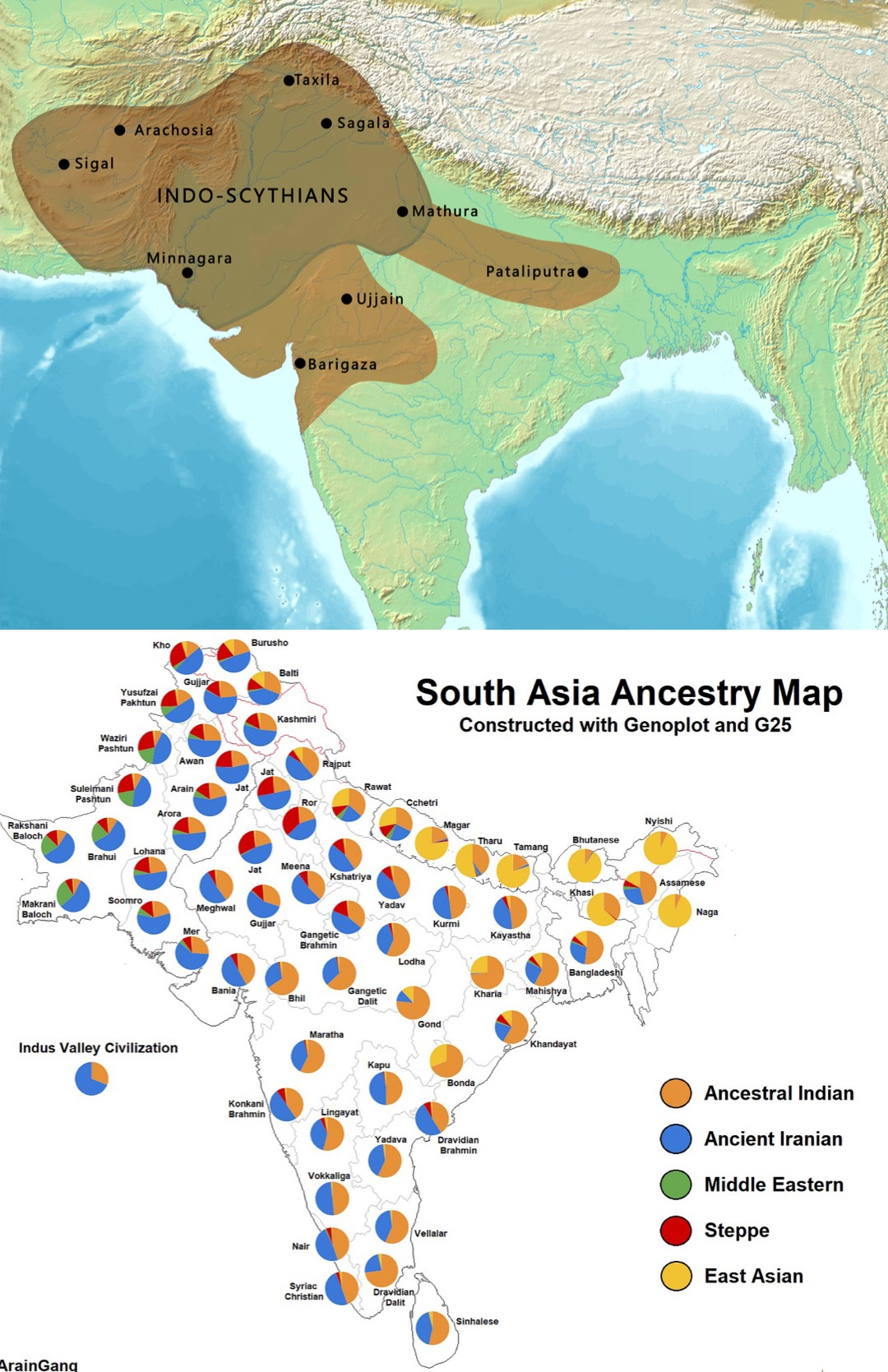
Sorry if it came of as rude .I liked the article.It is just that I am tired of listening to hindus preaching for tolerance and secularism ( I interpreted the comment to which I replied to as the same sort of stuff )
This is a scholarly take on this subject. Thanks for painstakingly referring to all the sources and writing this.